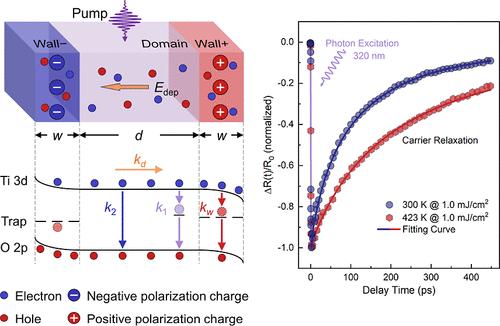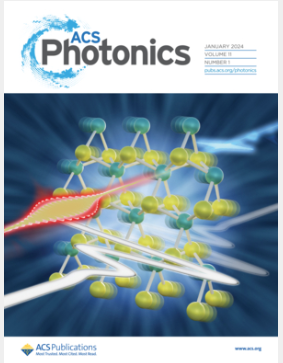Femtosecond Laser-Induced Ultrafast Carrier Dynamics in Ferroelectric and Paraelectric BaTiO3: Exploring Domain Wall Effects
IF 6.5
1区 物理与天体物理
Q1 MATERIALS SCIENCE, MULTIDISCIPLINARY
引用次数: 0
Abstract
Ferroelectric materials are promising candidates in solar-energy conversion applications and the development of next-generation photoelectronic devices. The internal depolarization fields and associated domain walls are believed to significantly affect macroscopic photoelectrical properties of ferroelectric materials. However, their roles during the ultrafast relaxation of photon-generated carriers at its intrinsic excitation temporal scale are not yet fully understood. Using femtosecond time-resolved optical reflectivity measurements, we found that the carrier lifetime is ∼200 ps shorter in ferroelectric phase BaTiO3 than in the paraelectric phase. This difference cannot be fully explained by the commonly used trap-assisted and second-order recombination models. We propose a theoretical model to incorporate drifting of photoelectrons due to the depolarization field and recombination processes within the domain wall region. Our model provides excellent numeric fitting to the ultrafast optical reflectivity measurements across various pump fluences and specimen base temperatures. The method presented in this study can be generalized to the carrier relaxation dynamics of other ferroelectric materials, to provide better understanding on the role of domain walls on nonequilibrium relaxation dynamics of carriers. Additionally, the picosecond evolution of domain wall charges revealed by our model suggests the potential for developing photodevices with ultrafast optical modulation of ferroelectric BaTiO3.

飞秒激光诱导铁电和准电BaTiO3的超快载流子动力学:探索畴壁效应
铁电材料在太阳能转换应用和下一代光电子器件的开发中具有广阔的应用前景。内部退极化场和相关畴壁对铁电材料的宏观光电性能有重要影响。然而,它们在光子产生的载流子在其内在激发时间尺度上的超快弛豫中的作用尚未完全了解。利用飞秒时间分辨光学反射率测量,我们发现铁电相BaTiO3的载流子寿命比准电相短约200ps。这种差异不能完全解释常用的陷阱辅助和二阶重组模型。我们提出了一个理论模型来考虑由于退极化场和畴壁区域内的复合过程引起的光电子漂移。我们的模型提供了优秀的数值拟合,以超快的光学反射率测量跨越各种泵的影响和试样的基础温度。该方法可以推广到其他铁电材料的载流子弛豫动力学,从而更好地理解畴壁对载流子非平衡弛豫动力学的作用。此外,我们的模型揭示的畴壁电荷的皮秒演化表明,开发具有铁电性BaTiO3的超快光调制的光器件具有潜力。
本文章由计算机程序翻译,如有差异,请以英文原文为准。
求助全文
约1分钟内获得全文
求助全文
来源期刊

ACS Photonics
NANOSCIENCE & NANOTECHNOLOGY-MATERIALS SCIENCE, MULTIDISCIPLINARY
CiteScore
11.90
自引率
5.70%
发文量
438
审稿时长
2.3 months
期刊介绍:
Published as soon as accepted and summarized in monthly issues, ACS Photonics will publish Research Articles, Letters, Perspectives, and Reviews, to encompass the full scope of published research in this field.
 求助内容:
求助内容: 应助结果提醒方式:
应助结果提醒方式:


